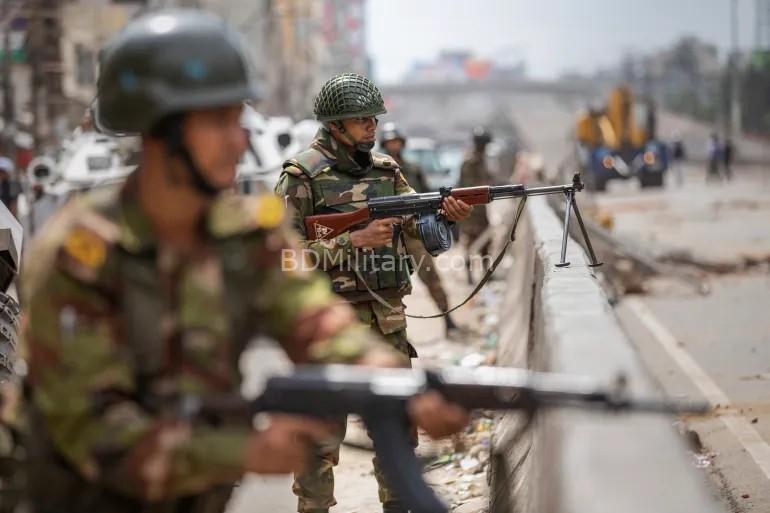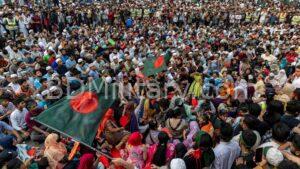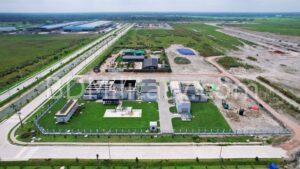The International Crimes Tribunal (ICT) in Bangladesh continues its high-profile trial against former Prime Minister Sheikh Hasina, former Home Minister Asaduzzaman Khan, and former police chief Chowdhury Abdullah Al Mamun, who are being tried in absentia following the July uprising of 2024. State-appointed defence lawyer Amir Hossain is set to begin arguments after chief prosecutor Tajul concludes his submissions. Mamun has agreed to serve as a state witness in the case.
The trio faces prosecution for command responsibility in ordering and overseeing the violent suppression of civilian protests. Tajul argued that documentary and video evidence demonstrates that Hasina, as the executive head and superior commander of all security forces, authorised the use of lethal weapons against demonstrators, orders executed by Asaduzzaman Khan, Mamun, DMP Commissioner Habibur Rahman, their subordinates, and ruling Awami League activists.
Evidence from Health Facilities and Ballistic Experts
Tajul presented extensive forensic evidence. Physicians from the Combined Military Hospital, Dhaka Medical College, the National Institute of Neurosciences and Hospital, and the National Institute of Ophthalmology and Hospital, together with the Criminal Investigation Department’s ballistic experts, submitted bullet samples collected from victims. These samples, along with prior testimonies, established that victims were struck by firearms and ammunition typically used only by government forces.
Use of RAB Helicopters and Heavy Weaponry
The prosecution presented evidence that the Rapid Action Battalion (RAB) conducted 36 helicopter flights between July 1 and August 5, 2024, for crowd dispersal and reconnaissance. Video footage showed tear gas, sound grenades, and gunfire directed at protesters from the Bell 407 helicopters.
A RAB headquarters report listed pilots, passengers, ranks, and contact details, as well as the minimum estimate of firearms and bullets used, including shotguns, submachine guns, tear gas, and gas guns.
Police headquarters data indicated that law enforcement personnel fired over 3,00,000 bullets nationwide, including 95,313 in Dhaka. Investigation officer Md Alomgir confirmed the use of light machine guns, submachine guns, shotguns, revolvers, and pistols during the crackdown.
Forensic Findings on Military Rifles and Ammunition
Tajul emphasised that forensic examinations, corroborated by the UN Human Rights Office (OHCHR), showed that most protest deaths resulted from firearms, including military rifles and shotguns loaded with lethal metal pellets.
According to the OHCHR report published on February 12, 2025, up to 1,400 people were killed between July 15 and August 5, 2024, including at least 13 women and roughly 12–13 per cent children.
Forensic examinations of 130 deaths revealed that:
- 66% of victims were killed by bullets fired from military rifles
- 12% were killed by shotguns with metal pellets
- 2% were killed by pistols
- 20% were killed by other weapons
The military rifles involved were automatic and semi-automatic firearms used by the Border Guard Bangladesh (BGB), RAB, Army, Ansar/VDP battalions, Armed Police Battalions, and regular police. Most victims were struck by 7.62x39mm military-grade bullets, standard ammunition for rifles produced by the Bangladesh Ordnance Factories (BOF).
In certain cases, armour-piercing bullets, intended for combat and not civilian law enforcement, were used against unarmed protesters. Video evidence identified personnel carrying SKS, Type 56, and BD-08 rifles, all using the 7.62x39mm calibre. A few civilians were seen with pistols, revolvers, submachine guns, and homemade firearms, but these accounted for only a minor share of deaths.
25 Military Officers Wanted by the ICT
The ICT has issued formal charges and arrest warrants against 25 military officers, mostly former but also including some serving members of the Bangladesh Army. They are accused of:
- Enforced disappearances
- Secret detention and torture
- Direct involvement in killings of civilians
- Supporting unlawful orders issued by political leaders
The Army confirmed that 15 serving officers named in the warrants had been detained and placed in military custody inside Dhaka Cantonment. The Ministry of Home Affairs declared a building inside the cantonment as a temporary prison facility to hold them, a move that has sparked debate over jurisdiction and the legal framework for the trial.
OHCHR Calls for Civilian Oversight and Accountability
The Office of the UN High Commissioner for Human Rights (OHCHR) has called on Bangladeshi authorities to swiftly produce the army officers held in military custody before a “competent” civilian court.
Human Rights chief Volker Türk said this is the first time formal charges have been filed for enforced disappearances in Bangladesh, describing it as a “significant moment” for justice and for victims’ families. He emphasised:
“It is crucial that the army promptly produces these detained officers to a competent civilian court, for fair and transparent criminal proceedings. We urge full respect for the most scrupulous standards of due process and fair trial, as guaranteed in international law. The protection of victims and witnesses in these sensitive and significant cases must be ensured.”
The OHCHR highlighted that accountability for past abuses is essential and recalled that enforced disappearance was officially recognised in Bangladesh for the first time following the country’s ratification of the UN Convention on Enforced Disappearances in August 2024, alongside amendments to the ICT Act.
Türk added that a core recommendation of the UN fact-finding report on the deadly 2024 protests was that those responsible for serious human rights violations must be held accountable.
“Beyond ensuring individual accountability, the best way forward for Bangladesh is a comprehensive process of truth-telling, reparation, healing and justice. Such a process must address the legacy of serious human rights violations and ensure that these abuses can never happen again.”
He further urged the authorities to prioritise resolution of pending cases, ensure due process, and release anyone arbitrarily detained.
Remarks
The evidence presented before the ICT highlights widespread use of military-grade firearms and ammunition in suppressing the July uprising. From military rifles produced by BOF to armour-piercing bullets, the prosecution has shown a direct link between state forces and civilian deaths.
With the 25 military officers now facing charges and the OHCHR calling for civilian court oversight, Bangladesh is at a pivotal moment in its pursuit of accountability, justice, and reform for victims of the July uprising.

Khaled Ahmed is a seasoned former intelligence analyst and military expert from the Netherlands, bringing over 15 years of specialised experience in operational intelligence, threat analysis, and strategic defence planning. Having served in high-level, classified roles within Dutch military intelligence, he possesses rare expertise in European security architecture, NATO doctrine, and asymmetric warfare. Khaled’s deep operational insight and international perspective enable him to deliver precision-driven intelligence analysis and forward-looking strategic forecasts. A trusted contributor to high-level risk assessments and security briefings, he offers readers clarity on complex defence and security challenges. Khaled leads the National Security and Fact Analysis sections at BDMilitary. He holds a Master’s degree in International Relations from the University of Groningen, The Netherlands, and is fluent in Dutch, French, and Arabic — combining linguistic dexterity with operational expertise to analyse security issues across cultures and regions.



